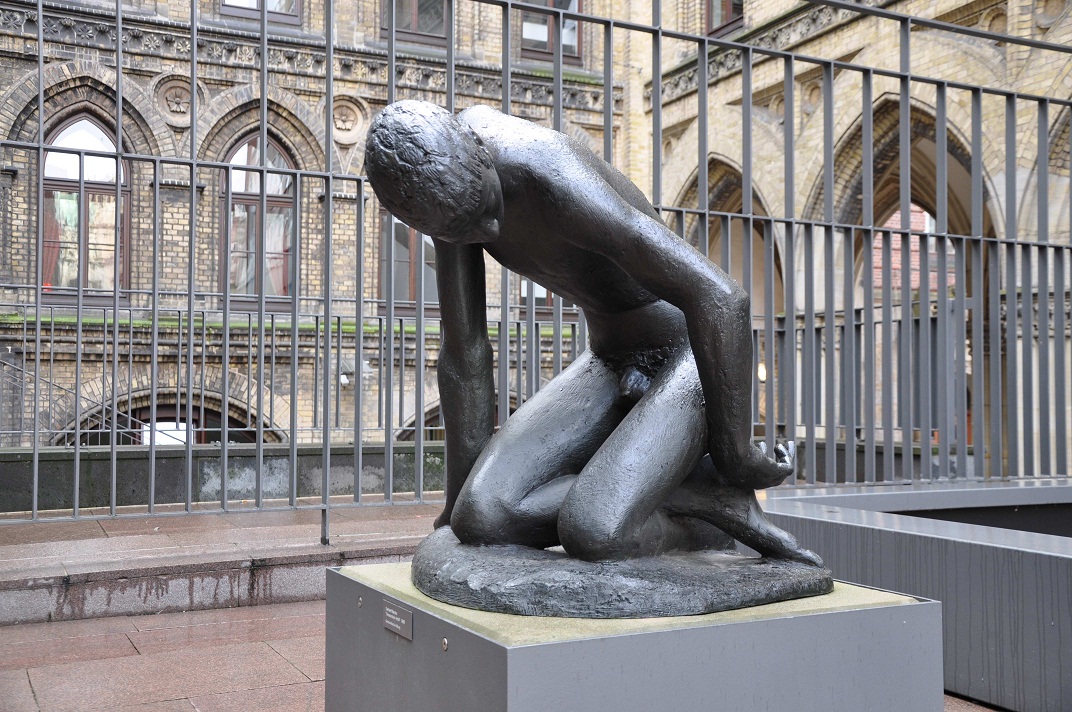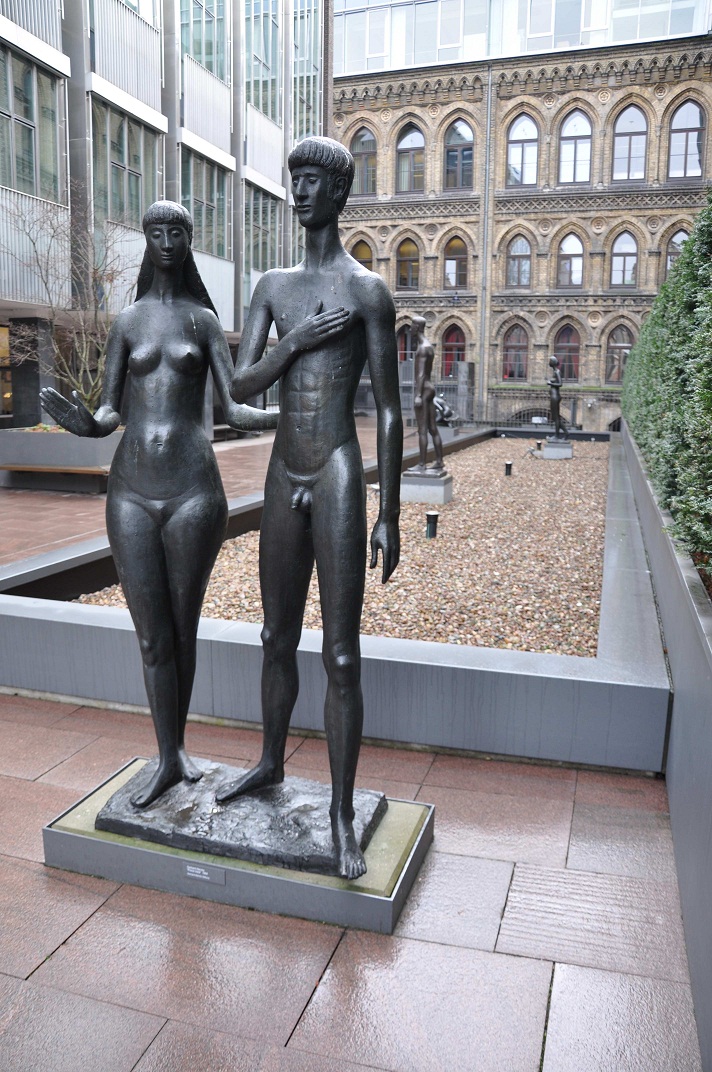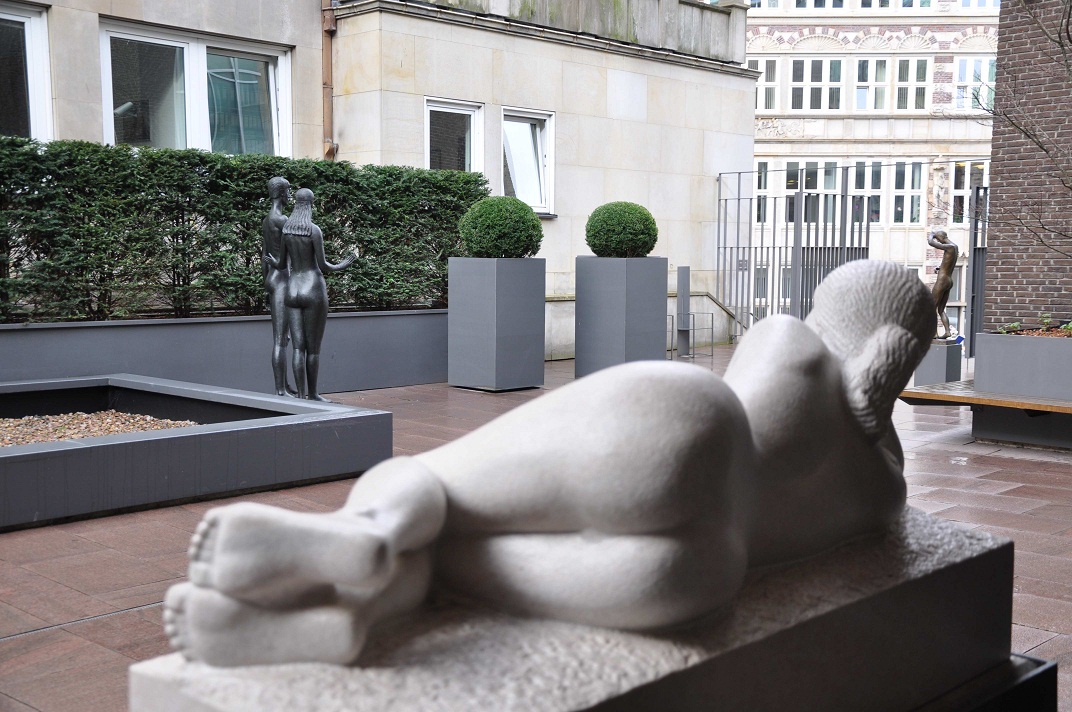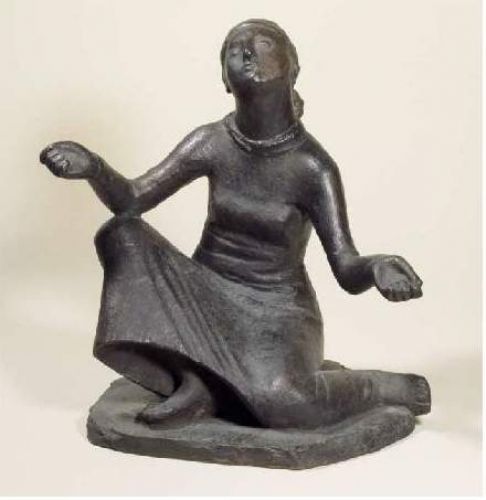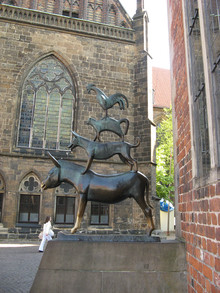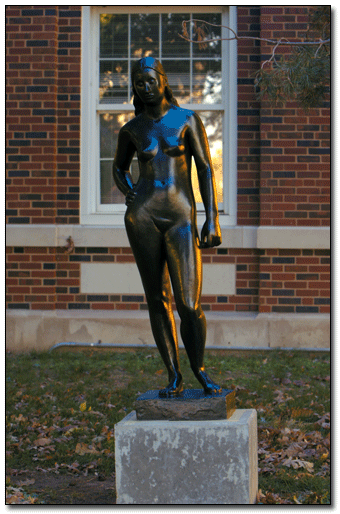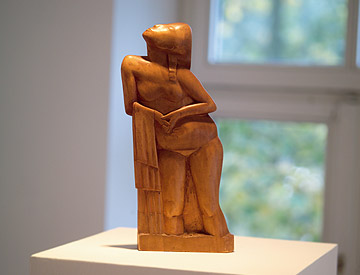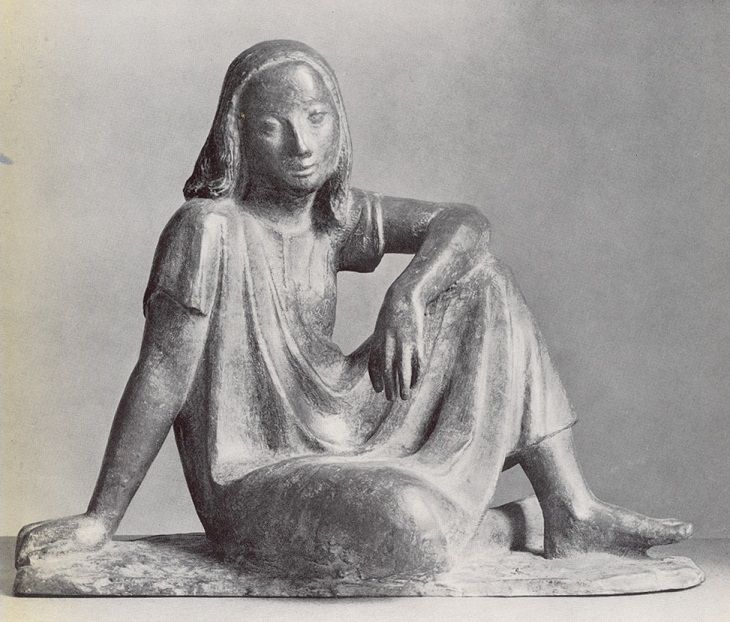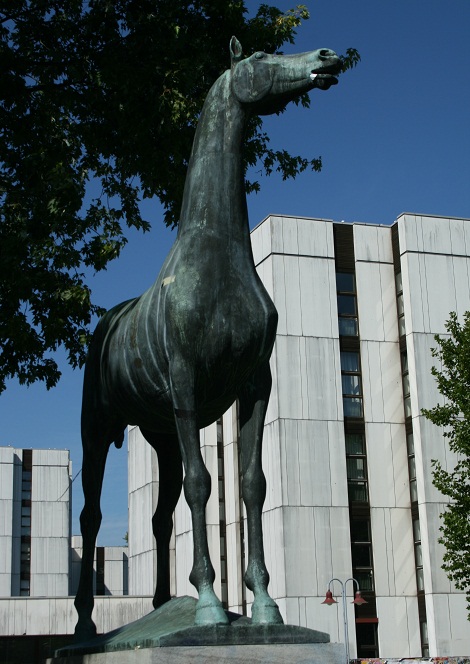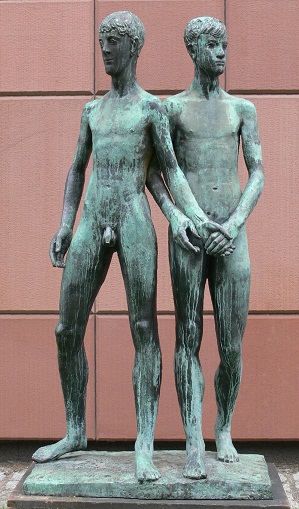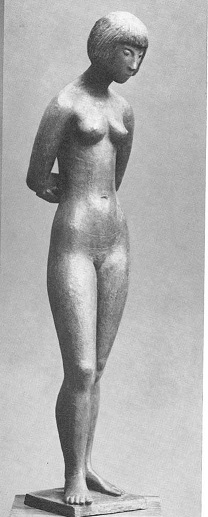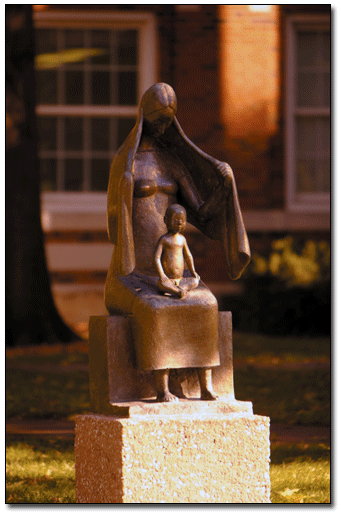<Back to Index>
- Sculptor Gerhard Marcks, 1889
PAGE SPONSOR
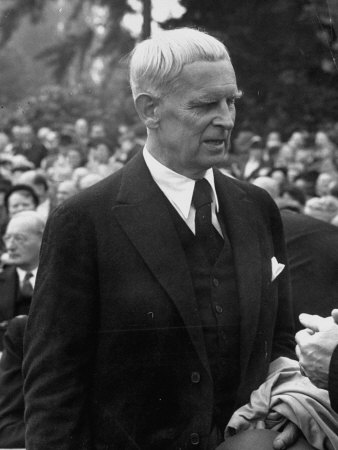
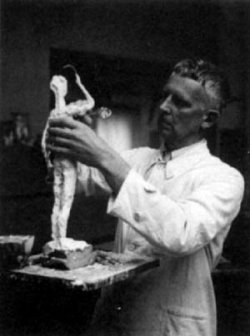
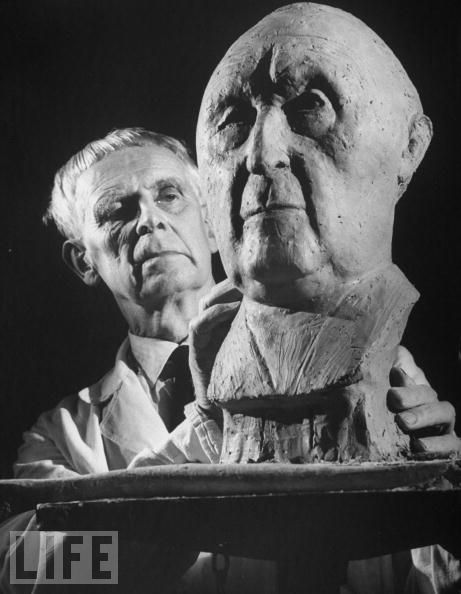
Gerhard Marcks (February 18, 1889 – November 13, 1981) was a German sculptor, who is also well known for his drawings, woodcuts, lithographs and ceramics.
Marcks was born in Berlin, where, at age 18, he worked as an apprentice to German sculptor Richard Scheibe. In 1914, he married Maria Schmidtlein, with whom he would raise six children. During World War I, he served in the German army, which resulted in long term health problems.
With architect Walter Gropius (who would later be the founder of the Bauhaus school in Weimar), Lyonel Feininger, Scheibe and others, Marcks was a member of two art - related political groups, the Novembergruppe (November Group) and the Arbeitsrat für Kunst (Workers Council for Art). He was also affiliated with the Deutscher Werkbund, of which Gropius was a founding member.
In 1919, when Gropius founded the Bauhaus, Marcks was one of the first three faculty members to be hired, along with Feininger and Johannes Itten. Specifically, Marcks was appointed the Formmeister (Form Master) of the school’s Pottery Workshop, which was located not in Weimar but in an annex to the school in nearby Dornburg. The other teacher in that workshop, its Lehrmeister (Crafts Master) was Master Potter Max Krehan, the last of a long line of potters, whose workshop was in Dornburg. Krehan taught the students to throw pots on the wheel, to trim and glaze them, and to fire the kiln. Marcks, in addition to duties in Weimar, taught the history of the practice, encouraged experimentation, and sometimes decorated pots.
Earlier,
Marcks had made the models for a series of animal sculptures, which
were reproduced in China by a porcelain factory. His interest in animal
forms is reflected in the work he made for his first Bauhaus portfolio (Neue Europaeische Graphik I), such as Die Katzen ("The Cats") and Die Eule ("The Owl"), both woodcuts. In time, his focus shifted to the human figure,
and it was this subject that continued to hold his attention for the
rest of his life.
In September 1925, the Bauhaus was relocated to Dessau, and its Pottery Workshop was discontinued. Marcks moved instead to the Kunstgewerbeschule (School of Applied Arts) in Burg Giebichenstein near Halle. After the death of its director, Paul Thiersch, Marcks was named his replacement, a position he continued in until his dismissal in 1933. He was fired because his work was deemed unsuitable by the Nazis, with the result that several works were in the infamous exhibition of "degenerate art" in Munich in 1937, along with that of other Bauhaus artists, among them Herbert Bayer, Lyonel Feininger, Johannes Itten, Wassily Kandinsky, Paul Klee, Laszlo Moholy - Nagy, Oskar Schlemmer and Lothar Schreyer.
Despite such persecution, Marcks continued to live in Germany (in Mecklenburg)
throughout World War II. In 1937, when twenty - four of his works were
confiscated and destroyed by the Nazis, he was prohibited from
exhibiting and threatened with being forbidden to work. During this
period, he made several trips to Italy, where he worked in the Villa Romana in Florence and the Villa Massimo in Rome. In 1943, his studio in Berlin was bombed during an air raid, and many of his works destroyed.
After World War II, Marcks became Professor of Sculpture at the Landeskunstschule (Regional Art School) in Hamburg, where he taught for four years, before retiring to Cologne. He also designed memorials for soldiers and civilians who had died in the war. In 1949, he was awarded the Goethe Medal; and in 1952, he was given the Knight of the Order Pour le Mérite, civil class.
Marcks
died in 1981 in Burgbrohl, Eifel. A decade earlier, the Gerhard Marcks
Haus, which houses a permanent exhibition of his artwork, had been
established in his honor in Bremen,
Germany. In this museum are 12,000 of his sketches and preparatory
drawings, 900 prints, and all his sculptures (about 350). In the U.S.,
there is a collection of Marcks' work (68 drawings, 65 prints and 9 nine
bronze sculptures) at Luther College in Decorah, Iowa, most of which were given to that school by his former student and close associate, Marguerite Wildenhain. Of particular note is a momumental Marcks bronze statue titled Oedipus and Antigone (1960), which was installed on that campus in 2000.
